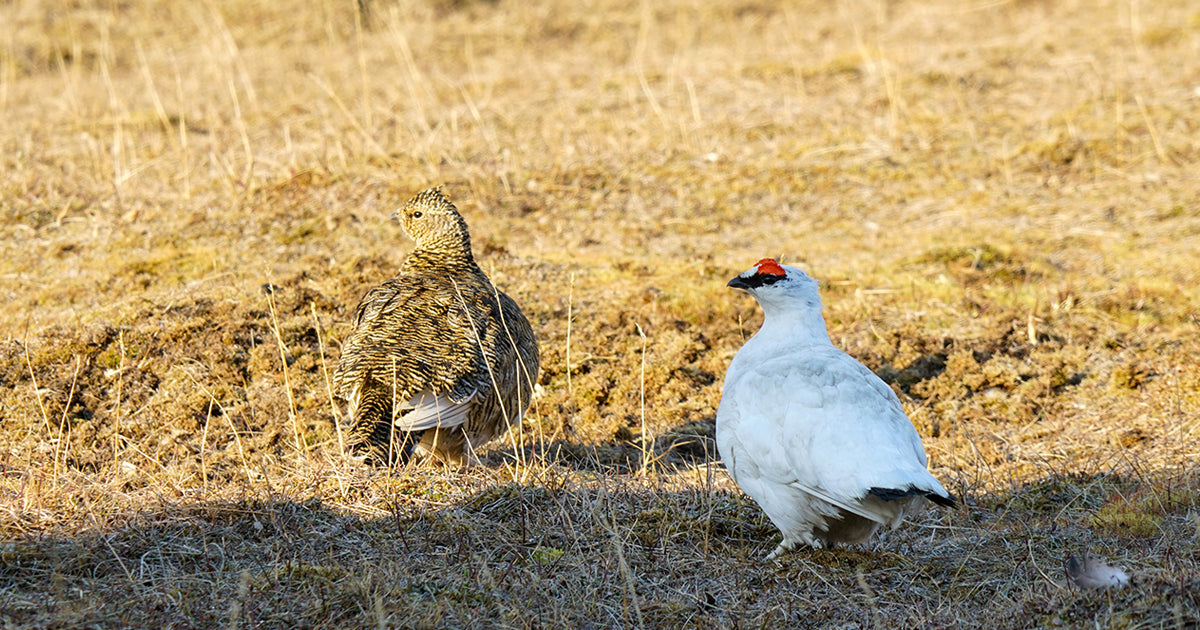
The Svalbard Rock Ptarmigan
|
|
Time to read 2 min
|
|
Time to read 2 min
When we talk about Svalbard, thoughts often turn to the polar bear, reindeer, Arctic fox, and Arctic tern. We have chosen the polar bear as a symbol for our project because its survival is closely tied to the loss of ice in Svalbard and the overall global changes in the cryosphere.
However, there is another symbol of the Arctic, a more discreet animal, a relic of the last great ice age: the Alpine Ptarmigan (Lagopus mutus hyperborea / Svalbardrype in Norwegian).
The Svalbard archipelago hosts one of the largest concentrations of birds in the North Atlantic, not in terms of species, as there are only 164 species, but in sheer quantity, with some colonies of guillemots numbering over 150,000 pairs.
The Ptarmigan is quite different; it does not live in colonies and has the unique characteristic of residing on the archipelago year-round, making it a true inhabitant of the wild nature of Svalbard and a master of survival and adaptation to the climate at these latitudes.
This is why it can be considered a totemic animal of Svalbard, its presence symbolizing glacial retreat as it now nests where ice was once present.

The Svalbard Alpine Ptarmigan is a medium-sized bird, a subspecies of the Alpine Ptarmigan, endemic to Svalbard, both heavier and larger than its mainland cousins.
Measuring around 35 centimeters in length and weighing between 490 and 1,200 grams depending on the time of year, it accumulates fat in summer to survive the long winter months.
In winter, the plumage of both males and females is entirely white, with only a red comb above their eyes as a touch of color.

In April-May, females don their summer plumage with a reddish-brown color. Males retain their white plumage until July, a perfect example illustrated in the photo.
It is only in mid-August that males also don their summer attire, which features a brown plumage, so that by the end of September, both males and females return to their white winter plumage.
Patience and perseverance are required to observe this virtuoso of white camouflage in winter and rocky color in summer.

Observing animals like the Ptarmigan makes us realize how fantastic our planet is. Faced with glaciers, icebergs, fauna, and flora that have adapted to such an intense environment, everything comes into perspective; we are captivated.
We believe that the outdoors can change lives.
It is time to reconnect with nature, to relearn to love it, as the wonder of nature is the key to the changes we need.
Learning differently, immersed in a space like Svalbard, where nature is omnipresent and grandiose, is the best way to truly understand our planet, to reconnect with this nature of which we are a part, to love it again to better preserve it, and simply take action.
This is what we are trying to achieve with our project explore.Svalbard. Our goal is to connect young explorers to nature so that they can feel its strength, fragility, and freedom.
Learning to explore differently involves understanding how to preserve and act simultaneously.
Photos : Explore Svalbard // Olivier Nolin – Wildlife is amazing. Keep a distance and remember, you are the guest.